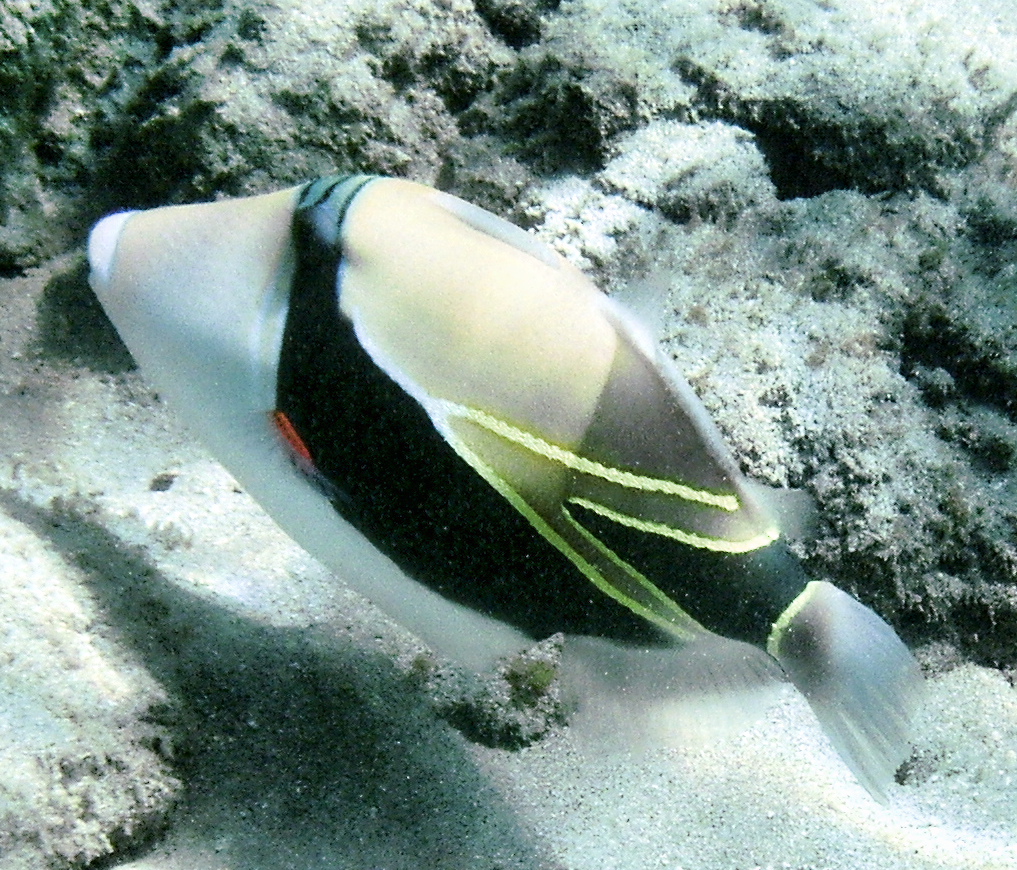Published in the Ocean Watch column, Honolulu Star-Advertiser © Susan Scott
October 25, 2010
As I traveled through the American Southwest toward my sailboat, moored in a sleepy little town on the Sea of Cortez (Gulf of California), about a dozen people warned me to stay out of Mexico because of the recent violence. I went anyway, loaded my boat with food and water, and sailed away from my peaceful marina without a hint of trouble.
A few hours later, after anchoring in a calm, crescent bay surrounded by jagged desert mountains, I snorkeled to an acquaintance’s sailboat anchored nearby. And there I met my first trigger-happy, gun-toting person in Mexico.
“See any triggerfish down there?” Bob asked. “They’re delicious. I get them by spear gun.”
Triggerfish are found around the world in tropical and subtropical waters. The fish get their name from having the ability to lock the sturdy first spine of their dorsal fin into an erect position by wedging a second, shorter spine (the trigger) behind the first.
When triggerfish are threatened, they swim into a hole, often with an entrance so small it looks as if the fish won’t fit through. This tight squeeze is intentional because once the fish is inside the snug hideout, it raises and locks the strong spine on its back above, and lowers another stiff spine from its belly below. Whether for a night’s sleep or as protection from a predator, the fish is firmly wedged in.
And I mean firmly. Years ago a Hawaii biologist studying reef triggerfish (fondly known as humuhumunukunukuapuaa) told me he wanted to know just how strong these fish’s spines were. In the name of science, he pulled on a reef triggerfish with all his strength. Only after it died could the fish be dislodged.
 Triggerfish in Hanauma Bay, Oahu, Hawaii
Triggerfish in Hanauma Bay, Oahu, Hawaii
This defense can kill the fish another way, too. My sailor neighbor Bob told me he once saw a triggerfish stuck upright inside the mouth of a juvenile sea lion.
In raising its upper and lower spines, the fish had pierced the roof of the poor mammal’s mouth, meaning a slow death to both fish and sea lion.
The Hawaii biologist could pull on that reef triggerfish only because it was lodged in its hole head — and teeth — first. Triggerfish mouths are small but their jaws are powerful, and the teeth sharp and strong. These features enable the fish to crunch into small pieces their meals of snails, crabs and sea urchins.
Some triggerfish blow a stiff jet of water at sea urchins, tipping them over to get at the soft parts beneath.
Several of the larger species of triggerfish, which grow up to 2 1/2 feet long here and 3 feet in the South Pacific, can be dangerous to snorkelers and divers. Females dig shallow craters in sand or rubble, lay their eggs there and defend them with a mother’s passion.
In one of his many fish books, Hawaii biologist Jack Randall reports that he was bitten on the leg by a large female triggerfish. Another struck his camera when the fish deemed it too close for comfort.
People here along the Sea of Cortez consider triggerfish a delicacy. Heads and skeletons of these distinctly shaped fish litter camps along the shoreline.
During my snorkeling excursion near my neighbor’s boat, I spotted a 2-foot-long, fine-scale triggerfish, a species also found in Hawaii. But triggerfish here are heavily hunted and extremely wary, and it ducked into a hole before I could get a good look. I saw the all-gray fish up close later, though, when a local fisherman proudly showed me two triggerfish he’d just speared.
I feel safe sailing alone in the Sea of Cortez. Local residents are horrified by the drug war violence that is giving their country a bad name, and go out of their way to be friendly and helpful. The only guns and triggers I expect to see in this wildlife paradise are marine.